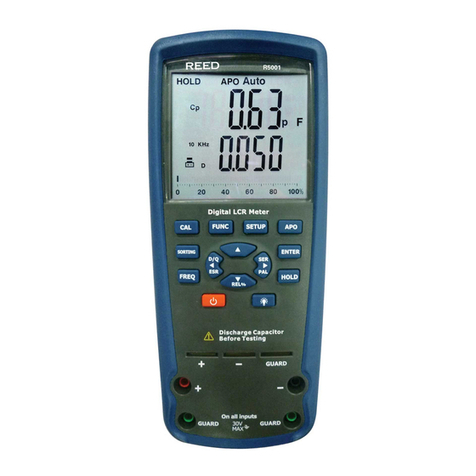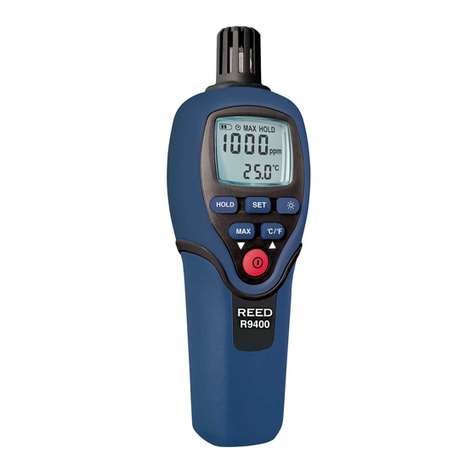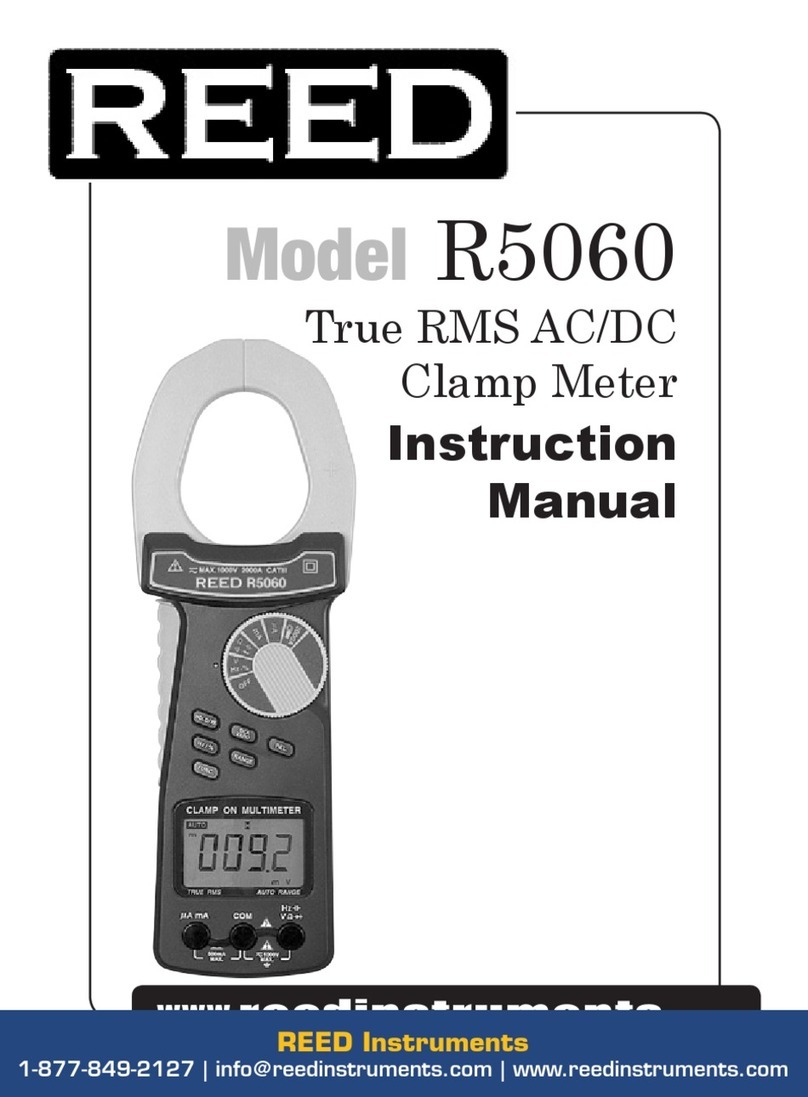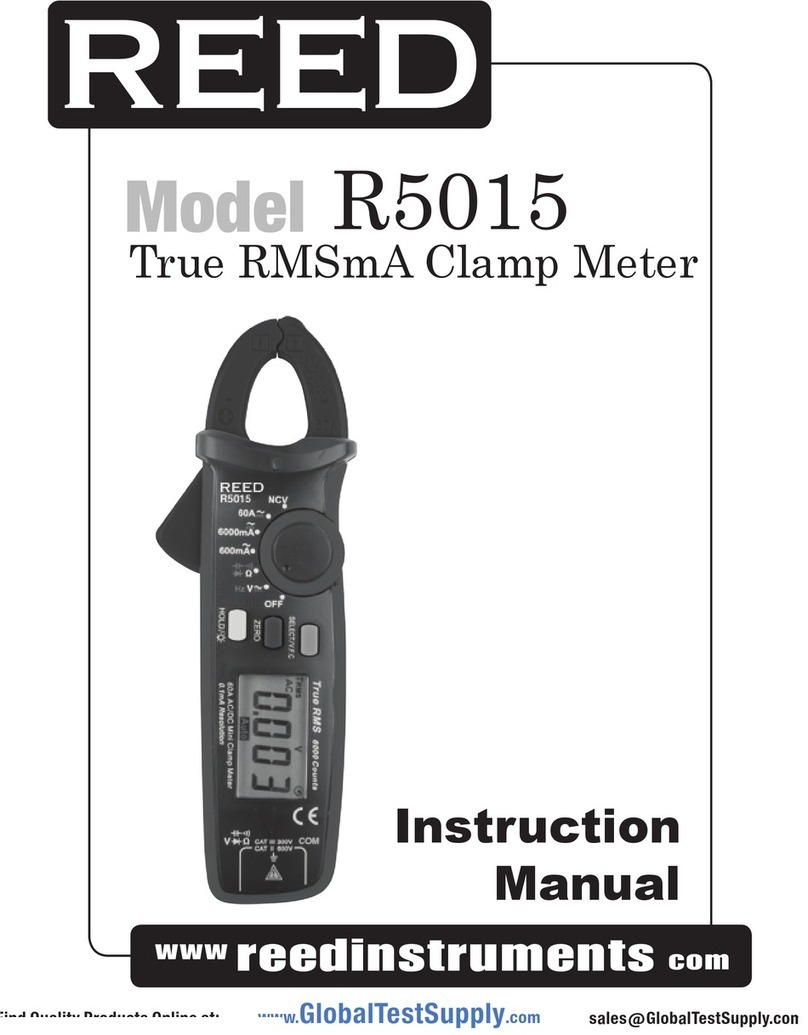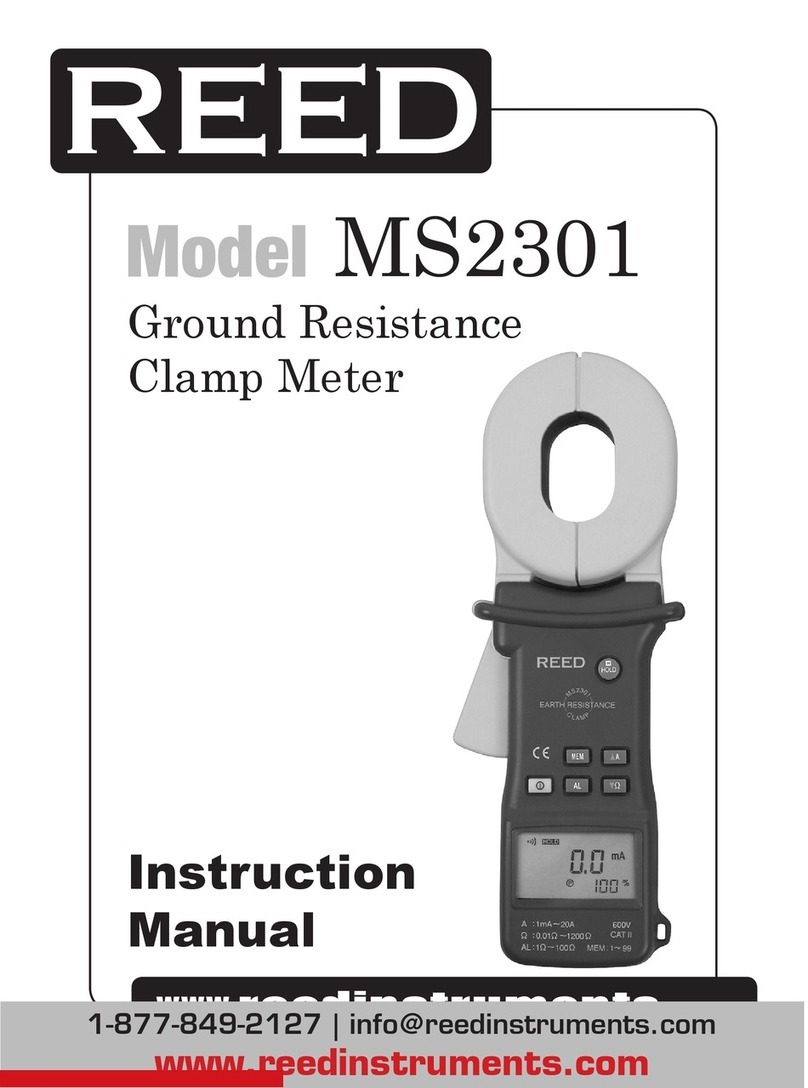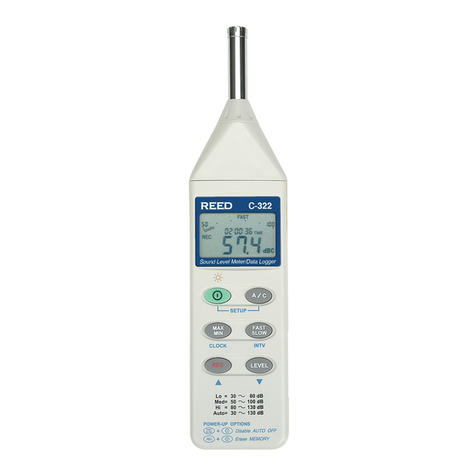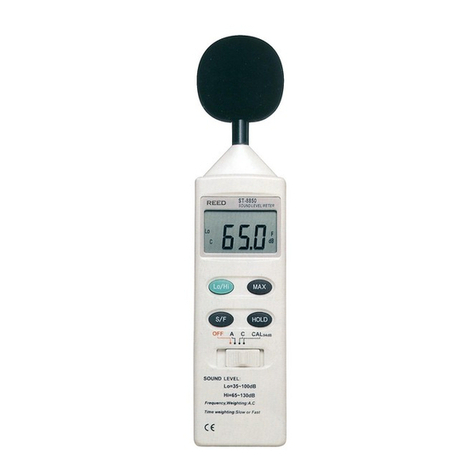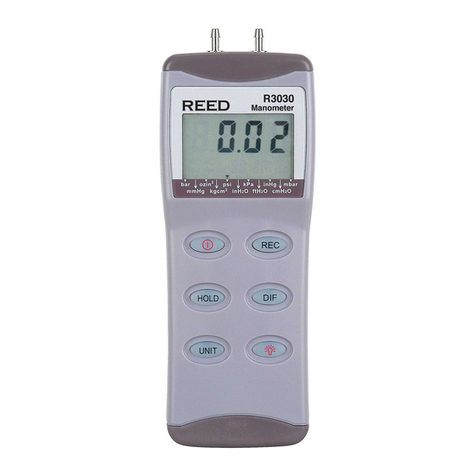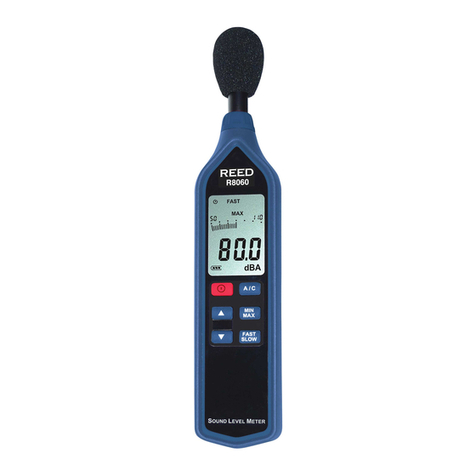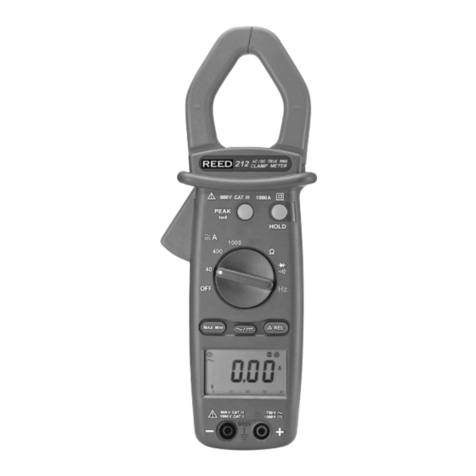reedinstruments
www com
6
Calibration Procedures
1) Drop a little oil on the 5 mm Standard block (#12 on page 4).
2) Press the Calibration button (#8 on page 4), the “CAL” symbol will be
shown on the Display. “CAL” is the abbreviation for calibration.
3) Place the Ultrasonic sensor (#9 on page 4) on the Standard block
(#12 on page 4). Verify the coupling is okay by verifying that the Cou-
pling indicator symbol (#6 on page 4) is on. “5.0” mm (or “0.197”
inch) and “CAL” will be shown in the display. When steady, press the
“CAL” button to conrm and then the unit return to the state of mea-
surement.
4) The calibration result will automatically be saved to the unit once
conrmed. It is not necessary to calibrate often unless you suspect the
accuracy of measurements is off.
Measuring Sound Velocity
1) Press the “VEL” button (#4 on page 4) and the display will show the last
velocity measurement.
How to measure the thickness by the known velocity?
2) The velocity can be changed by pressing the Plus or Minus buttons to
the velocity value. The increment is 10m/s every time when pressing the
Plus or Minus buttons. The increment is 100m/s if pressing the Plus or
Minus buttons for more than approximately 4 seconds.
3) Drop a little oil onto the material to be measured and place the
Ultrasonic sensor onto the surface. The reading on the display is the
thickness if it is properly coupled. Therefore, if we know the velocity of
a certain material, it is easy to measure the thickness.
How to measure the velocity with a sample for which you
know the thickness?
2) Find a sample for which you know the thickness.
3) Repeat steps 2 & 3 above until the measurement value is the same as
the known thickness. Therefore the set value is the velocity of the mate-
rial to be measured, by which you can measure any unknown thickness
of the same material.
4) To browse the velocity, press the “VEL” button. To stop browsing, press
the “VEL” button again or wait until the meter automatically shows “0”.
5) By using the velocity measurement, it is easy to measure the thickness
of any hard materials.
www.reedinstruments.com














